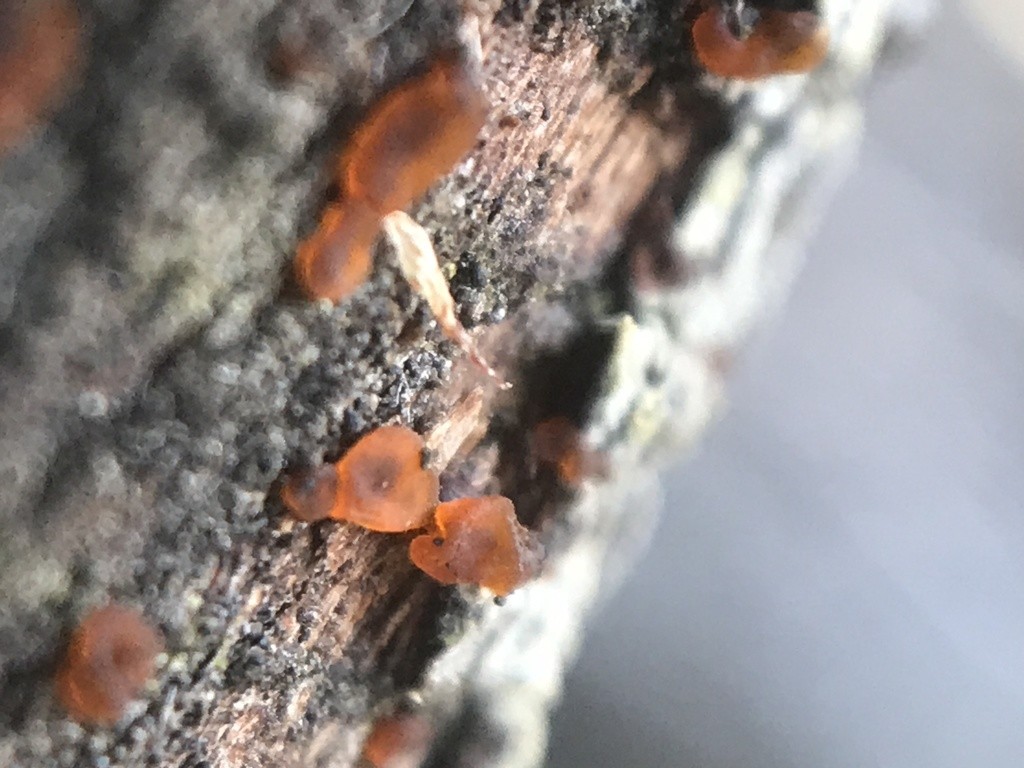Orbilia
Scientific name: Orbilia
Orbilia
Scientific name: Orbilia
 Photo By Jennifer Rycenga , used under CC-BY-4.0 /Cropped and compressed from original
Photo By Jennifer Rycenga , used under CC-BY-4.0 /Cropped and compressed from original Description
Orbilia is a fascinating group of fungi known for their small, cup-shaped fruiting bodies that appear on decaying wood or bark. They are often brightly colored, with shades ranging from pale yellow to vibrant orange. These fungi play a vital role in ecosystems by breaking down dead plant material, contributing to nutrient cycling. Interestingly, some species within orbilia have been observed capturing tiny nematodes, showcasing their unique ecological interactions.